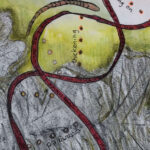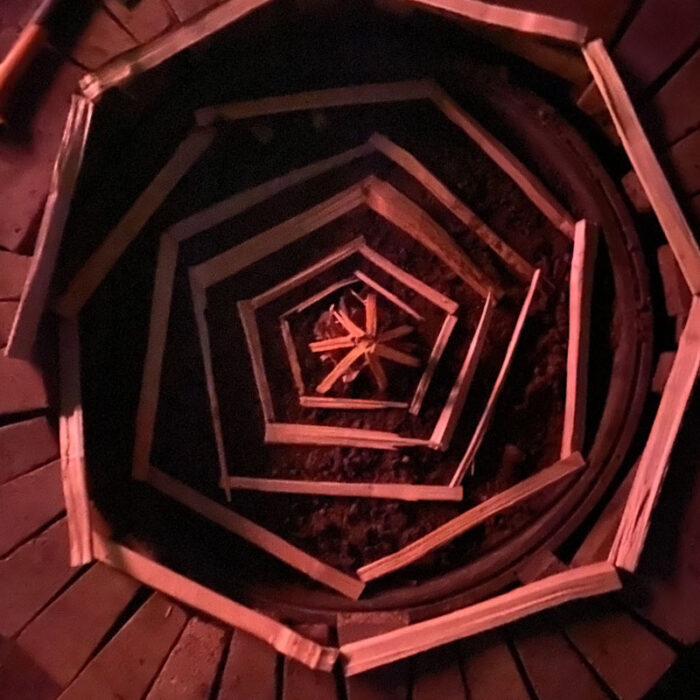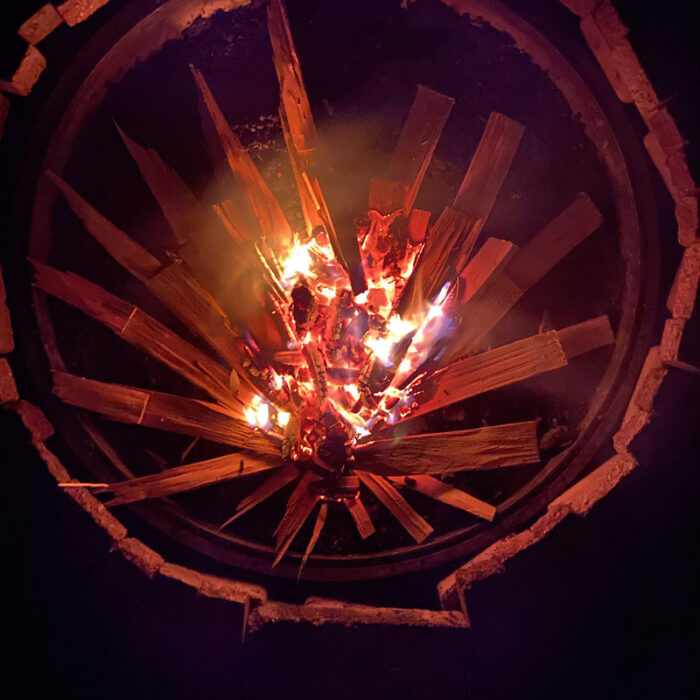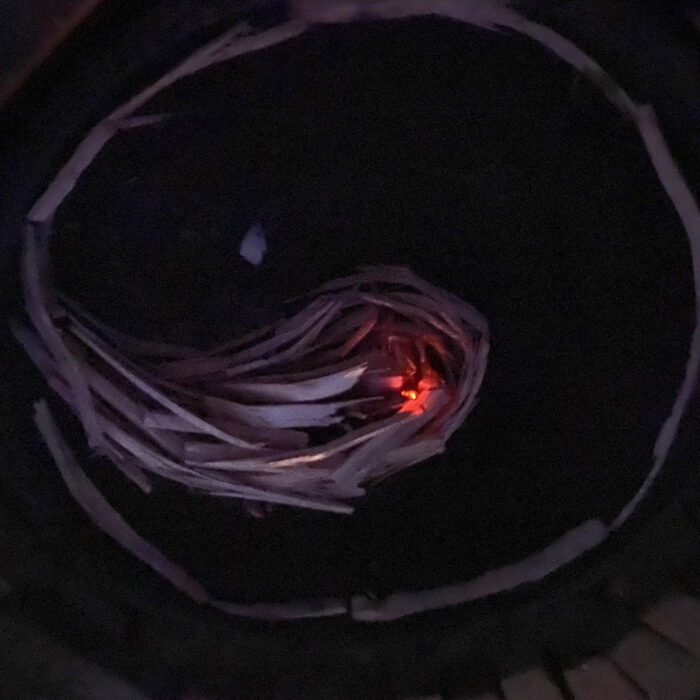
response
Jenny
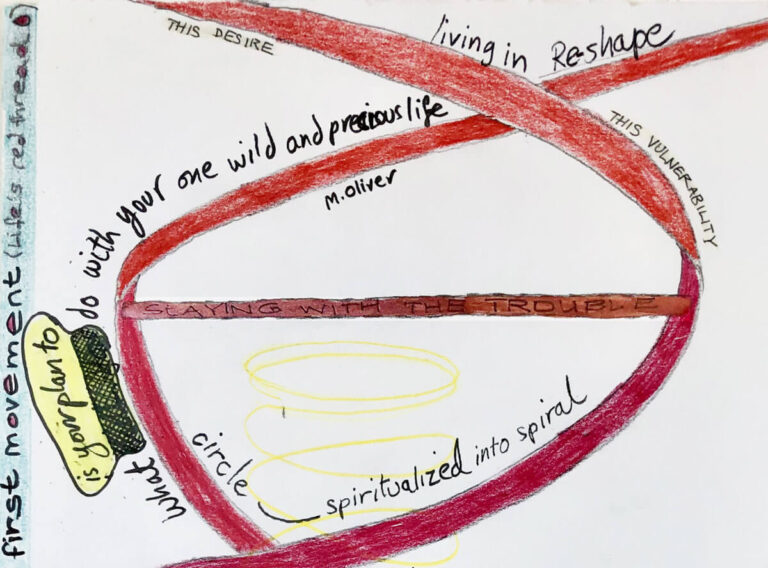

Something else was happening in my week… my friend Dale Rawlinson was texting me (as he texts many other friends) photos of his daily fire. (You’ll soon be able to read more about Dale and his fires here.)
Dale also likes to sing in the car, and he was sending me occasional snippets of his hearty singalongs of old classics. One morning he sent me a recording of “Man of Constant Sorrow,” and it was so delightful and full of gusto that I overdubbed my own goofy harmonies and sent it back to him.
A few days later, I picked up my guitar and found myself giving voice to the concept of “Staying With the Trouble”:
I’m staying with the trouble
I’m staying with the trouble
Staying with my grief
Even though I feel like running
I’m staying with these feelings
that are touching me with their fingertips
I’m staying with the trouble
I’m staying here with you
Moved by Dale’s pure and loving attention, I decided that I wanted to write him a song of his own, in praise and thanks. Over the next few days, I worked on “Every Face in Firelight”:
Every Face in Firelight
I have a friend who rises early in the dark
to build himself a daily fire
He lays the wood in pattern and he gently lights a spark
and wood and spark are beautiful
but it’s gentleness that makes it art
He started in the springtime as a vigil
and I guess you’d say it’s still a vigil now
He still does not know just what he’s doing
But he’s starting to know how
He says
Won’t you come and join me in the darkness
let your grief and worry burn away
cause every face in firelight is beautiful
and every heart is eased before the flames [intro]
o-oh
o-oh
o-oh
o-oh
That same friend has been recording in the car
The car’s a pretty good place to sing
He calls it “Silly Songs With Dale,”
cause, frankly, it’s embarrassing
and though it’s often beautiful
it’s joy that really makes it ring
He says he’s undergoing liberation
and I have to say I’m feeling freer too
I still don’t have a clue what I’m doing
but I’m doing it with you
He says
Won’t you come and join me in the darkness
let your grief and worry burn away
cause every face in firelight is beautiful
and every heart is eased before the flames
o-oh
o-oh
o-oh
o-oh
o-oh
o-oh
In the meantime, I kept working on “Staying With the Trouble.” I was trying to figure out what kind a verse would go with the chorus. I tried things like this:
And this:
I find that one pretty boring, but an occasional lyric is okay:
October days must be made to break your heart
The colors of the leaves are killing me
So much beauty as the landscape falls apart
I wanna fall like that —
figure out how to age into glory
Had a story I could fix my life
But now I think it’s perfect broken…
I don’t like “so much beauty” but I do like “age into glory.”
None of these experiments felt true to the feeling of “Staying With the Trouble.” Version 2 seemed to have potential as a song of its own, though. It turned out to be one of my favorite songs I’ve ever written:
Shitty Day
My friend’s dog died
My kids moved town
I don’t have a truck, but I bet it’d break down
I’d like to have sex but my hip got hurt
I’d look on the bright side but my eyes don’t work
Times I wish I would rather be dead
If I had a hammer you could hit me on the head
Singing like crap
and my best friend’s crying
We can’t go on but we gotta keep trying
Welcome to your shitty day
Maybe it’s another shitty day
I’m sorry for your shitty day
If it helps, I’m thinking of you
You are not alone in this painful place
I am holding you so close in my heart
I know you wish you didn’t feel this way
But we can sing the music of the broken parts, hey
My husband’s sick, he was gassed in a war
Hope had feathers and it flew into a glass door
It’s tough, we’re on a weird diet
I can’t shuffle cards cause he needs the house quiet
His brain got broke so it don’t work straight
He thinks I’m a jerk when in fact I’m great
Complaining’s not fair and blaming’s not true
But I gotta tell someone so I’m gonna tell you
Welcome to your shitty day
Maybe it’s another shitty day
I’m sorry for your shitty day
If it helps, I’m thinking of you
You are not alone in this painful place
I am holding you so close in my heart
I know you wish you didn’t feel this way
But we can sing the music of the broken parts, hey
Welcome to your shitty day
You know I love you
At some point over the course of this two weeks I played “Every Face in Firelight” for my husband. He said it was beautiful — and then he said, “Should I be jealous?” It’s true that writing a song (at least, a certain kind of song) for someone else is a major compliment. I reassured Luc that he needn’t be jealous of Dale… and then I thought, I should write Luc a song, too.
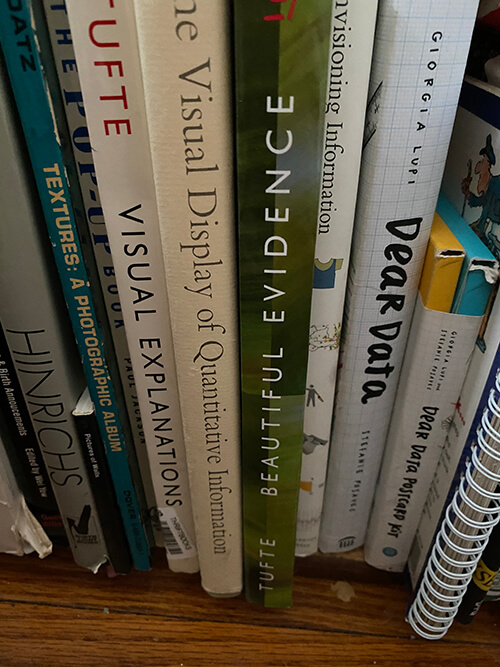
That one came in super-fast. I looked over at my bookshelf, caught sight of the title Beautiful Evidence by Edward Tufte, and had the whole song written in about an hour. Another one I’m really glad I wrote. (Luc and I have a great version worked up with drums and bass that I’ll get around to recording one of these days.)
Beautiful Evidence
Evidence
Beautiful evidence
Such beautiful evidence —
of what I’m not sure,
but that’s what I believe in
Evidence
Beautiful evidence
Such beautiful evidence
I study all the ways you move
I’m ready to discover more
My thesis requires closer observation
“Scientific” is the word for
or “religious” maybe says more
but regardless, in you reposes all the most beautiful
evidence
Beautiful evidence
Such beautiful evidence —
of what I’m not sure,
but that’s what I believe in
Evidence
Beautiful evidence
Such beautiful evidence
I read you like a holy book
You feed me like beauty does
I need you like I need the oxygen I’m breathing
You are the textbook example
You’re the perfect sample
I’d better gather more of your
Exhibit A: your smile
Exhibit B: your face
Exhibit C: the feel of your skin on mine
Figure 1: my heartbeat
Appendix 2: the way you sing
In this article I will detail
Evidence (etc.)
I was really helixing during this movement. Everything I touched struck a new song in me, just like one of Dale’s fires. I wanted to write a song about that, about the fact that we depend on each other to keep going. Enter “Contraption”:
Contraption
We are all amateurs here
Trying to play a professional human
Trying to act like we know what we’re doing
Trying to build something to carry us from A to B
I’ve got some mismatched wheels
and that guy’s got a ski
living in these bodies
that hurt and are afraid
loving other bodies
through all the mess we make
we’re stronger than we think
and braver than we know
and together is the only way
that this contraption gets to go
Well the problem with society is the people
And the problem with people is our brains
Spinning stories of bitter separation
that you and me and the guy with the ski are not the same
living in these bodies
with all their awkward fluids
loving other bodies
which we cannot stop doing
we’re stronger than we think
and freer than we know
and together is the only way
that this contraption
gets to go
As for “Staying With the Trouble”… I realized that it didn’t need a verse. The fact that Dale had been able to sing it back to me right away seemed like the most important thing. It was the simple refrain itself that mattered — a refrain that could be adapted to any situation.
I sang a version for a friend of mine who’d told me about some of the challenges (and some of the guides and allies) she’d been going through. The chorus is enough for this song. Sometimes, the chorus is all we need:
